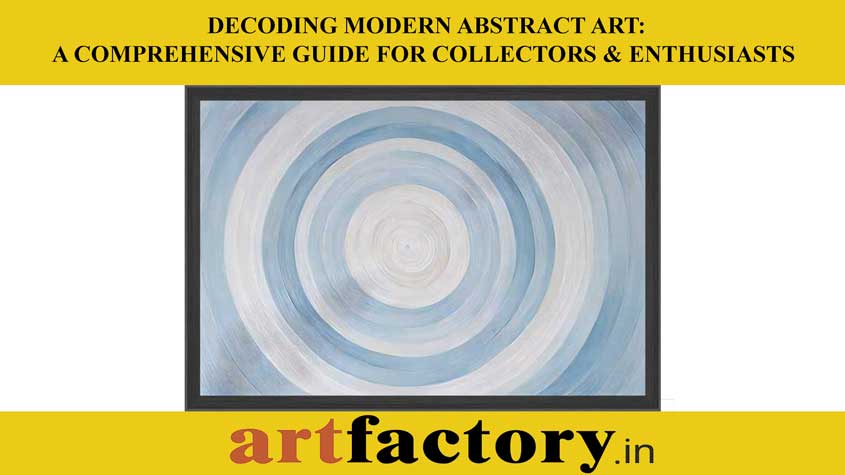
Decoding Modern Abstract Art: A Comprehensive Guide for Collectors & Enthusiasts
Introduction :
Modern abstract art, a captivating and ever-evolving genre, continues to fascinate art lovers worldwide. Unlike representational art, which depicts recognizable objects, abstract art focuses on forms, colors, and textures, inviting viewers to interpret and engage with the artwork on a personal level. This guide will delve deep into the nuances of modern abstract art, helping you understand its origins, key movements, and how to curate your own collection, while also exploring the fascinating intersection of art and ancient principles of harmony, such as Vastu and Feng Shui.
History and Evolution of Modern Abstract Art :
The Pioneers: Trace the roots of abstract art to early 20th-century artists like Wassily Kandinsky, Piet Mondrian, and Kazimir Malevich, who broke away from traditional artistic norms.
Key Movements: Explore influential movements such as:
- Cubism: Emphasize the fragmentation and geometric representation of forms.
- Abstract Expressionism: Discuss the spontaneous and emotional approach of artists like Jackson Pollock and Mark Rothko.
- Color Field Painting: Highlight the use of large, flat areas of color, as seen in the works of Barnett Newman.
- Minimalism: Explain the focus on simplicity and reduction of forms.
Post-War Developments: Analyze how abstract art continued to evolve after World War II, incorporating new materials and techniques.
Understanding Different Styles and Techniques) :
- Geometric Abstraction: Define and provide examples of art that uses geometric shapes and patterns.
- Lyrical Abstraction: Discuss the expressive and fluid nature of this style.
- Action Painting: Explain the physical and dynamic approach of artists who used this technique.
- Mixed Media Abstraction: Highlight the use of various materials, such as collage and found objects.
- Digital Abstraction: Talk about new forms of abstract art created using computers and digital tools.
How to Choose and Collect Modern Abstract Art with a Purpose: Vastu & Feng Shui :
- Consider Your Personal Style: Encourage readers to explore different styles and find what resonates with them.
- Evaluate the Artwork's Quality: Discuss factors such as materials, technique, and composition.
- Research the Artist: Emphasize the importance of understanding the artist's background and influences.
- Think About Placement: Offer tips on how to display abstract art in different spaces.
- Build a Cohesive Collection: Advise readers on how to curate a collection that reflects their taste and vision.
- Modern Abstract Art and Vastu/Feng Shui: Introduce the concept of selecting art based on direction and the five Vastu elements (Earth, Water, Fire, Air, and Space). * Explain how different colors, shapes, and textures can correspond to specific elements and directions. For example, blue and wavy patterns might be suitable for the North (Water element), while red and triangular shapes might be appropriate for the South (Fire element). * Provide examples of how specific abstract art pieces can be chosen to enhance the energy of a room according to Vastu or Feng Shui principles.
The Emotional Impact of Modern Abstract Art :
- Subjective Interpretation: Explain how abstract art allows for multiple interpretations.
- Evoking Emotions: Discuss how color, form, and texture can evoke specific emotions.
- Creating a Mood: Offer insights on how abstract art can transform the atmosphere of a space.
Where to Find Modern Abstract Art :
- Online Galleries and Marketplaces: Provide a list of reputable platforms, including Artfactory.in Artfactory Abstract Art.
- Art Fairs and Exhibitions: Encourage readers to attend art events.
- Directly from Artists: Discuss the benefits of buying art directly from artists.
- Art Consultants: Explain how art consultants can help with art selection.
Conclusion
Modern abstract art is a dynamic and expressive form of art that continues to inspire and challenge viewers. By understanding its history, styles, and techniques, and considering the principles of Vastu and Feng Shui, you can appreciate its beauty and create a collection that reflects your unique taste and promotes harmony in your space.

Comments : (0)